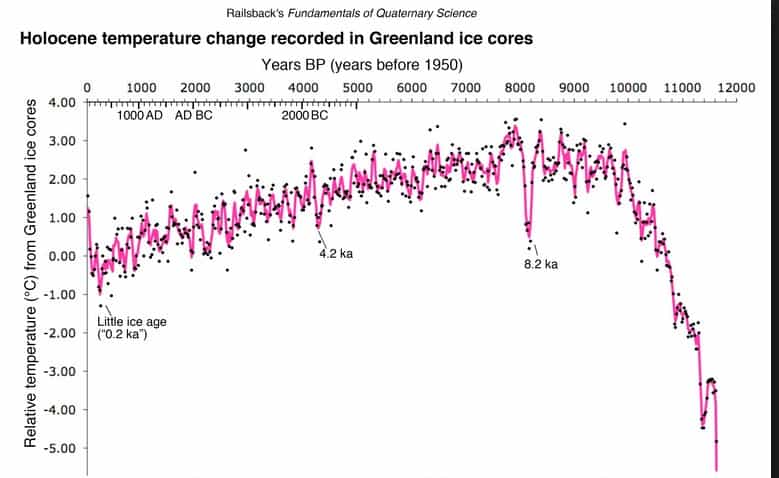
Although remnants of the Laurentide Ice Sheet did not disappear until about 7 Ka, the early to mid-Holocene (4,500 to 10,000 years) has often been considered to have been warmer than the last 4,500 years. A thermal maximum occurred at about 6 to 7 Ka (Figure 5.18). Conclusions about the mid Holocene warmth are based on several lines of evidence – latitudinal displacements of vegetation zones (Ritchie et al., 1983) and vertical displacements of mountain glaciers (Porter & Orombelli, 1985).
Quantitative estimates of mid-Holocene warmth (COHMAP, 1988) suggest that the Earth was perhaps 1 or 2C warmer than today. Most of this warmth may primarily represent seasonal (summer) warmth rather than year-round warmth. Accompanying the higher global temperatures were significant changes in precipitation patterns, most noticeably in the monsoon belt of Africa and Asia. Reconstructions from palaeo-lake levels and latitudinal vegetation shifts (Ritchie & Haynes, 1987) suggest that these regions were considerably wetter than they were during the arid conditions of the last glacial maximum (18Ka), when moisture availability from cooler Northern Hemisphere sub-tropical oceans was reduced (Street-Perrott & Perrott, 1990).




Leave a Reply